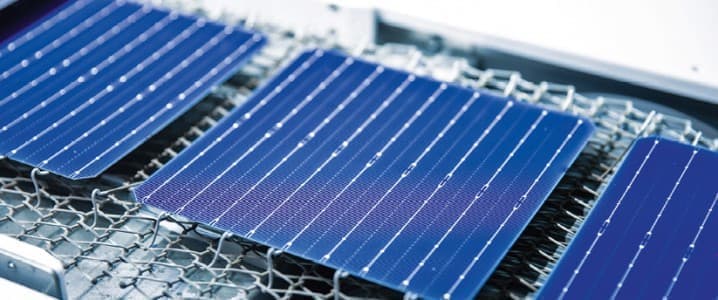Why China’s Green Energy Push Has the Western World Worried
October 2, 2024
- Western nations are desperate to counter the huge competitive advantage enjoyed by China’s green energy products thanks to generous government subsidies.
- The outcry against China’s renewable energy sector comes at a time when Chinese green energy companies have been stealing market share from their Western rivals.
- Earlier in the year, U.S. Treasury Secretary Janet Yellen warned Beijing that its national underwriting for energy and other companies is creating oversupply and distorting global markets

When former U.S. president Donald Trump ascended into the Oval Office in 2017, he kicked off his presidency by investigating unfair trade practices in China as part of his ‘America First’ policy. A year later, he imposed hefty tariffs on a wide range of goods from the Asian nation, sparking outrage and retaliatory tariffs from its trading partners. But people who predicted that Biden’s administration would mark a return to normalcy on trade issues after the drama of tariff battles and tweet diplomacy of the Trump-era were dead wrong. The current administration has been nearly as hard on China as the previous one, albeit with much less fanfare. The Office of the U.S. Trade Representative (USTR) has just finalized its plan to raise tariffs on a slew of Chinese goods, largely adopting hikes it first proposed in May.
The expended tariffs mainly target strategic product categories, including electric vehicles, batteries, solar cells, semiconductors and critical minerals. The final tariff structure covers thousands of items under 14 product categories, with the first tariff hikes set to go into effect on Sept. 27 and the rest over the next two years. And, they are just as punitive as those of the Trump era: Chinese EVs have been slapped with a hefty 100% tariff; a 25% tariff on lithium-ion EV batteries, and a 50% tariff on photovoltaic solar cells. Meanwhile, a 50% tariff on China-made semiconductors will go into effect in 2025.
Related: OPEC+ Leaves Current Output Cut Policy Unchanged at JMMC
But the U.S. is hardly an outlier here. The 27-member European Union is currently in the process of determining whether or not to impose duties on imports of Chinese electric vehicles. A year ago, EU President Ursula von der Leyen launched the anti-subsidy probe, and it concluded by recommending duties ranging between 8 percent and 35 percent on Chinese EVs. An informal vote held on July 15 saw a group of countries representing 62.5 percent of the bloc’s population in favor of the tariffs, meaning the final vote is likely to see the tariffs approved. Whereas these duties could buy time for the likes of Volkswagen (OTCPK:VWAGY) or Stellantis (NYSE:STLA) to adapt, they are likely to trigger another huge trade war with Beijing already threatening to impose tit-for-tat tariffs on a range of European goods including high-end autos, brandy, pork, and dairy products.
China Dominating Renewable Energy
The outcry against China’s renewable energy sector comes at a time when Chinese green energy companies have been stealing market share from their Western rivals. According to an analysis by the newspaper “Nikkei”, the top five Chinese suppliers of 71 categories of products and services in the renewable energy sector increased their market shares in 21 different categories compared to 2022, mostly at the expense of U.S. and European companies. In 2023, all Chinese companies were the world’s top five suppliers of photovoltaic panels, with their combined market share increasing by 7.5 percentage-points to 59.3 percent.
In the wind energy sector, Chinese companies occupied four of the top five positions, double the number from 2022, while their combined market share nearly doubled in a year to 44.2 percent. Notably, Goldwind Science & Technology, which was ranked second in 2022, took first place last year from European industry leader Vestas Wind Systems (OTCPK:VWDRY). Last year, Goldwind’s global market share increased to 13.9 percent, while Vestas’ fell from 14 to 10.5 percent. In electric cars, the Chinese company BYD, the world’s second-largest manufacturer, increased its global market share to 14.7 percent, now approaching Tesla‘s (NASDAQ:TSLA) 18.3 percent.
Western nations are desperate to counter the huge competitive advantage enjoyed by China’s green energy products thanks to generous government subsidies.
Earlier in the year, U.S. Treasury Secretary Janet Yellen warned Beijing that its national underwriting for energy and other companies is creating oversupply and distorting global markets when she pays the country an official visit.
“I intend to talk to the Chinese when I visit about overcapacity in some of these industries, and make sure that they understand the undesirable impact that this is having–flooding the market with cheap goods- -on the United States, but also in many of our closest allies, Yellen said in a speech in Norcross, Georgia.
“I will convey my belief that excess capacity poses risks not only to American workers and firms and to the global economy, but also productivity and growth in the Chinese economy, as China itself acknowledged in its National People’s Congress this month,” she added.
Yellen made the comments after visiting Georgia to see a newly reopened solar cell manufacturing plant, which closed shop in 2017 because of stiff competition from factories in China. The factory has, however, re-opened thanks to generous solar and clean energy tax credits in the 2022 Inflation Reduction Act.
By Alex Kimani for Oilprice.com
More Top Reads From Oilprice.com
<!–
Trending Discussions
–>
Sponsored Content
Alex Kimani
Alex Kimani is a veteran finance writer, investor, engineer and researcher for Safehaven.com.
Search
RECENT PRESS RELEASES
Related Post





